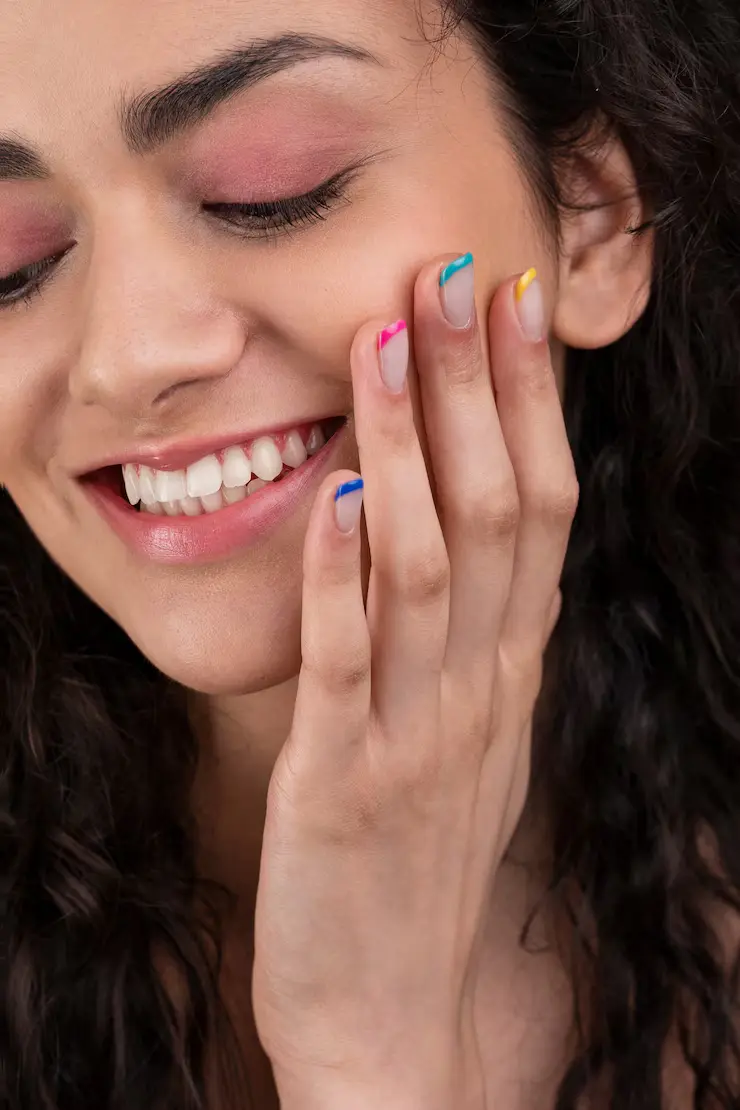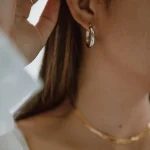Acrylic nails are a fantastic way to achieve long, glamorous nails, but when it’s time to remove them, the process can feel intimidating—especially if you want to avoid harsh chemicals like acetone. Whether you have sensitive skin, are concerned about nail damage, or simply prefer a more natural approach, there are several effective ways to remove acrylic nails without acetone. In this guide, we’ll explore these methods, share expert insights, and provide tips to keep your nails healthy and strong.
Table of Contents
ToggleWhy Avoid Acetone?
Acetone is a powerful solvent commonly used to dissolve acrylic nails. While it’s effective, it can also be harsh on your skin and nails, leading to dryness, irritation, and even brittleness. For those with sensitive skin or those who prefer gentler alternatives, avoiding acetone is a smart choice.
Method 1: Warm Water and Dish Soap
One of the simplest and gentlest ways to remove acrylic nails is by soaking them in warm water and dish soap. This method helps loosen the adhesive bond between the acrylic and your natural nail.
Steps:
- Fill a bowl with warm water.
- Add a few drops of dish soap.
- Soak your nails for 20–30 minutes.
- Gently lift the acrylic nails using an orange stick or cuticle pusher.
Expert Insight:
Marie Jones, a nail technician, says, “Soaking in warm water and dish soap can loosen the adhesive bond. This method takes longer but is gentler on the nails.”
Pro Tip:
If the acrylic doesn’t lift easily, repeat the soaking process. Patience is key!
Method 2: Filing Down the Acrylic
If you’re comfortable with a more hands-on approach, filing down the acrylic can be an effective method. This technique thins the acrylic layer, making it easier to remove.
Steps:
- Use a coarse nail file to file down the acrylic surface.
- Be careful not to file too aggressively and damage your natural nail.
- Once the acrylic is thin enough, soak your nails in warm, soapy water to further loosen the acrylic.
- Gently lift the remaining acrylic using an orange stick or cuticle pusher.
Expert Insight:
Sarah Miller, a beauty blogger, advises, “Filing down the acrylic with a coarse nail file can help thin the layer, making it easier to remove.”
Method 3: Dental Floss
Using dental floss is a creative and gentle way to remove acrylic nails. This method works best if the acrylic has already started to lift at the edges.
Steps:
- Gently lift the edge of the acrylic nail with an orange stick or cuticle pusher.
- Slide a piece of dental floss under the lifted edge.
- Slowly move the floss back and forth, working it under the acrylic nail.
- Continue until the acrylic nail is completely removed.
Expert Insight:
Kim Lee, a nail artist, suggests, “Using floss can be a gentle way to wedge under the lifted edges of the acrylic and pry it loose. Be careful not to lift or pry too aggressively to avoid damaging your natural nail.”
Pro Tip:
If the acrylic isn’t lifting easily, try soaking your nails in warm water first to soften the adhesive.
Method 4: Olive Oil and Lemon Juice
For those who prefer a natural approach, soaking your nails in a mixture of olive oil and lemon juice can help soften the acrylic. While this method may take longer, it’s gentle and nourishing for your nails.
Steps:
- Mix equal parts olive oil and lemon juice in a bowl.
- Soak your nails for 20–30 minutes.
- Gently lift the acrylic nails using an orange stick or cuticle pusher.
- Repeat the process if necessary.
Expert Insight:
David Chen, a natural beauty advocate, says, “Soaking your nails in a mixture of olive oil and lemon juice can help soften the acrylic. However, this method is not as effective as others and may require repeated soaking sessions.”
Aftercare Tips
No matter which method you choose, proper aftercare is essential to maintain the health of your natural nails.
Steps:
- Moisturize: Apply a nourishing cuticle oil to your nails and cuticles.
- Hydrate: Use a rich hand cream to keep your skin hydrated.
- Rest: Avoid applying new acrylics or nail polish immediately to give your nails time to recover.
Expert Insight:
Lisa Rodriguez, a dermatologist, advises, “Always moisturize your nails and cuticles after removal. This will help replenish lost moisture and prevent dryness.”
When to Seek Professional Help
If you’re unsure about removing your acrylic nails at home or if the process seems too daunting, it’s always best to consult a professional nail technician.
Expert Insight:
A nail care expert suggests, “If you’re unsure about removing your acrylic nails at home, it’s always best to consult a professional nail technician. They can safely remove the acrylics and recommend the best aftercare for your nails.”
Expert Insights and Studies
Understanding the science behind nail care can help you make informed decisions. Here are some key insights:
- “Nail Plate Injuries and Onycholysis Associated with Artificial Nail Use” (Journal of Cosmetic Dermatology, 2013): This study explores potential risks associated with artificial nail removal, including methods using acetone.
- “Evaluation of the Efficacy and Safety of a Novel Biocompatible Solvent for Artificial Nail Removal” (International Journal of Cosmetic Science, 2019): This study investigates the effectiveness and safety of a new solvent being developed specifically for artificial nail removal, potentially offering an alternative to acetone.
- “The Effect of Chemical Exposure on Nail Technicians’ Health: A Review of the Literature” (Dermatology Online Journal, 2010): This review explores the health risks associated with chemical exposure for nail technicians, including long-term exposure to acetone.
- “Consumer Perceptions and Practices Related to Artificial Nail Use” (Journal of Cosmetic Science, 2017): This study explores consumer behavior and preferences regarding artificial nails, potentially offering insights into the demand for non-acetone removal methods.
Here’s a table summarizing the key points about removing acrylic nails without acetone, making it easy for readers to understand the methods, steps, and pros and cons:
| Method | Steps | Pros | Cons |
|---|---|---|---|
| Warm Water and Dish Soap | 1. Fill a bowl with warm water. 2. Add dish soap. 3. Soak nails for 20–30 minutes. 4. Gently lift acrylic with an orange stick. |
Gentle; easy to do at home. | Takes longer; may require multiple soaks. |
| Filing Down the Acrylic | 1. Use a coarse nail file to thin the acrylic. 2. Soak nails in warm, soapy water. 3. Gently lift acrylic. |
Effective for thinning acrylic. | Requires patience; risk of over-filing. |
| Dental Floss | 1. Lift acrylic edge with an orange stick. 2. Slide floss under the edge. 3. Work floss back and forth to remove acrylic. |
Gentle; good for lifted edges. | Works best if acrylic is already lifting. |
| Olive Oil and Lemon Juice | 1. Mix equal parts olive oil and lemon juice. 2. Soak nails for 20–30 minutes. 3. Gently lift acrylic. |
Natural; nourishes nails. | Less effective; may require multiple soaks. |
Aftercare Tips
| Step | Why It’s Important |
|---|---|
| Moisturize | Replenishes lost moisture and prevents dryness. |
| Hydrate | Keeps skin and nails hydrated, promoting recovery. |
| Rest Nails | Gives nails time to recover before applying new polish or acrylics. |
Comparison: DIY vs. Professional Removal
| Factor | DIY Methods | Professional Removal |
|---|---|---|
| Cost | Affordable; uses household or store-bought products. | More expensive; requires salon services. |
| Effectiveness | Works well for gentle removal; may take longer. | Quick and efficient; minimizes damage. |
| Hair Health | Can be drying if not done carefully. | Professionals use techniques to protect nail health. |
| Time | Gradual process; may take hours or multiple sessions. | Faster results, often in a single session. |
Quick Tips for Safe Removal
| Tip | Why It’s Important |
|---|---|
| Be Patient | Gentle methods take time but are safer for your nails. |
| Avoid Aggressive Prying | Prevents damage to your natural nails. |
| Moisturize After Removal | Restores hydration and prevents brittleness. |
| Consult a Professional | Ensures safe and effective removal, especially for stubborn acrylics. |
This table format provides a clear, easy-to-understand breakdown of the methods, steps, and pros and cons of removing acrylic nails without acetone. It also includes aftercare tips and a comparison of DIY vs. professional methods, helping readers make informed decisions.
Final Thoughts
Removing acrylic nails without acetone is entirely possible with the right methods and a bit of patience. Whether you choose to soak your nails in warm water and dish soap, file them down, use dental floss, or try a natural approach with olive oil and lemon juice, each method has its own benefits and drawbacks.
Always remember to moisturize your nails and cuticles after removal to keep them healthy and strong. If you’re ever unsure or find the process too challenging, don’t hesitate to seek help from a professional nail technician. They can ensure your nails are safely and effectively cared for.
Happy nail care!
Key Takeaways:
- Avoid acetone if you have sensitive skin or prefer gentler methods.
- Soak nails in warm water and dish soap for a simple, gentle removal.
- File down the acrylic to thin it before removal.
- Use dental floss to gently pry off lifted acrylic edges.
- Try olive oil and lemon juice for a natural, nourishing approach.
- Moisturize and care for your nails after removal to keep them healthy.
With this guide, you’re equipped to remove acrylic nails without acetone like a pro. Your nails will thank you!
Related Nails Stories
- How to Take Acrylic Nails Off Without Acetone
- How to Get Fake Nails Off Without Acetone: A Gentle Approach
- Red Ombre Nails on a Budget: Easy DIY Tips and Tricks
- How to Take Fake Nails Off Without Acetone
- How to Stop Biting Nails in 9 Minutes
- How to Put on Fake Nails Without Glue
- How to Remove SNS Nails
- How to Hang a Mirror on a Wall Without Nails




